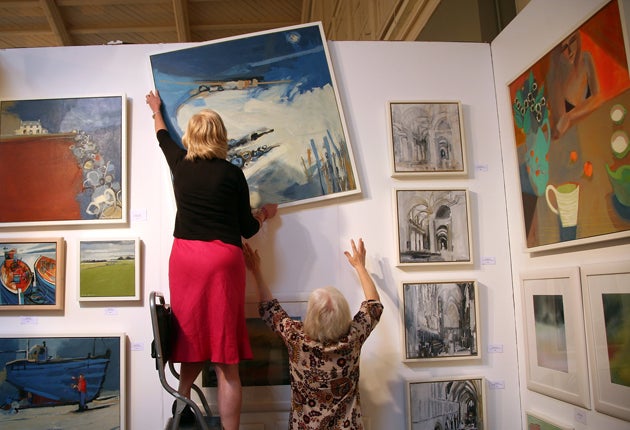'Emerging' art can produce dividends but don't forget that not everyone loves 'radical'

Your support helps us to tell the story
From reproductive rights to climate change to Big Tech, The Independent is on the ground when the story is developing. Whether it's investigating the financials of Elon Musk's pro-Trump PAC or producing our latest documentary, 'The A Word', which shines a light on the American women fighting for reproductive rights, we know how important it is to parse out the facts from the messaging.
At such a critical moment in US history, we need reporters on the ground. Your donation allows us to keep sending journalists to speak to both sides of the story.
The Independent is trusted by Americans across the entire political spectrum. And unlike many other quality news outlets, we choose not to lock Americans out of our reporting and analysis with paywalls. We believe quality journalism should be available to everyone, paid for by those who can afford it.
Your support makes all the difference.Investing in fine art has always been associated with the wealthy, but turbulent financial markets are tempting others with less cash into the field. "Investing in emerging and 'debut' artists can reap astonishing rewards.
For example, in 1990, a year after his graduation, Damien Hirst sold one of his medicine cabinets for £1,000. He sold a similar piece for £185,000 eight years later," says Sarah Ryan of the art promoters newbloodart.com.
An inexpensive way to access work is to attend graduate shows at art schools, and this is the season for MA and BA exhibitions. But for those without the time or inclination to visit in person, Newbloodart sells the works of emerging artists online. Prices range from £100 to £2,000 and purchases are delivered with a 14-day money-back guarantee. Its recent success stories are impressive: Emily Gregory Smith, for instance, has seen the value of her works grow by 200 per cent since 2005, while Malia Pettit has seen increases of 230 per cent since 2006.
Markets such as the Affordable Art Fair are another outlet for graduate work: Affordable only allows artists to exhibit pieces costing less than £3,000.
Investing in art is not without its downsides, however. The art market, too, has suffered from the recession. The Mei Moses Fine Art Index, which tracks auction prices, fell by 35 per cent in the first quarter of 2009. Crucially, art is an illiquid investment: money is recouped only when the work is resold. It is also highly susceptible to changing fashions, making it difficult to value for the long term.
"Buy something you like with broad appeal and don't expect it to rocket in value next week," says Kevin Tooze, the managing director of advisers Equity Partners and a former art lecturer.
Before purchasing, investors should check the provenance of an artwork and look at websites such as www.artloss.com, which can search databases of stolen art. The integrity of the work is also important. "A young artist's work may be fantastic and radical, but is the workmanship there?" asks Mr Tooze. "Will it fall apart later, or is it on an inappropriate canvas?"
After purchase, insurance is another consideration. A standard home contents policy covers only theft of, or damage to, items under £1,500. And on resale, returns may be taxed: "Any art sold at a profit will be subject to a capital gain tax at 18 per cent, but you can deduct maintenance and sale costs," says Adrian Kidd from advisers Unleash Advice Partnership.
Join our commenting forum
Join thought-provoking conversations, follow other Independent readers and see their replies
Comments